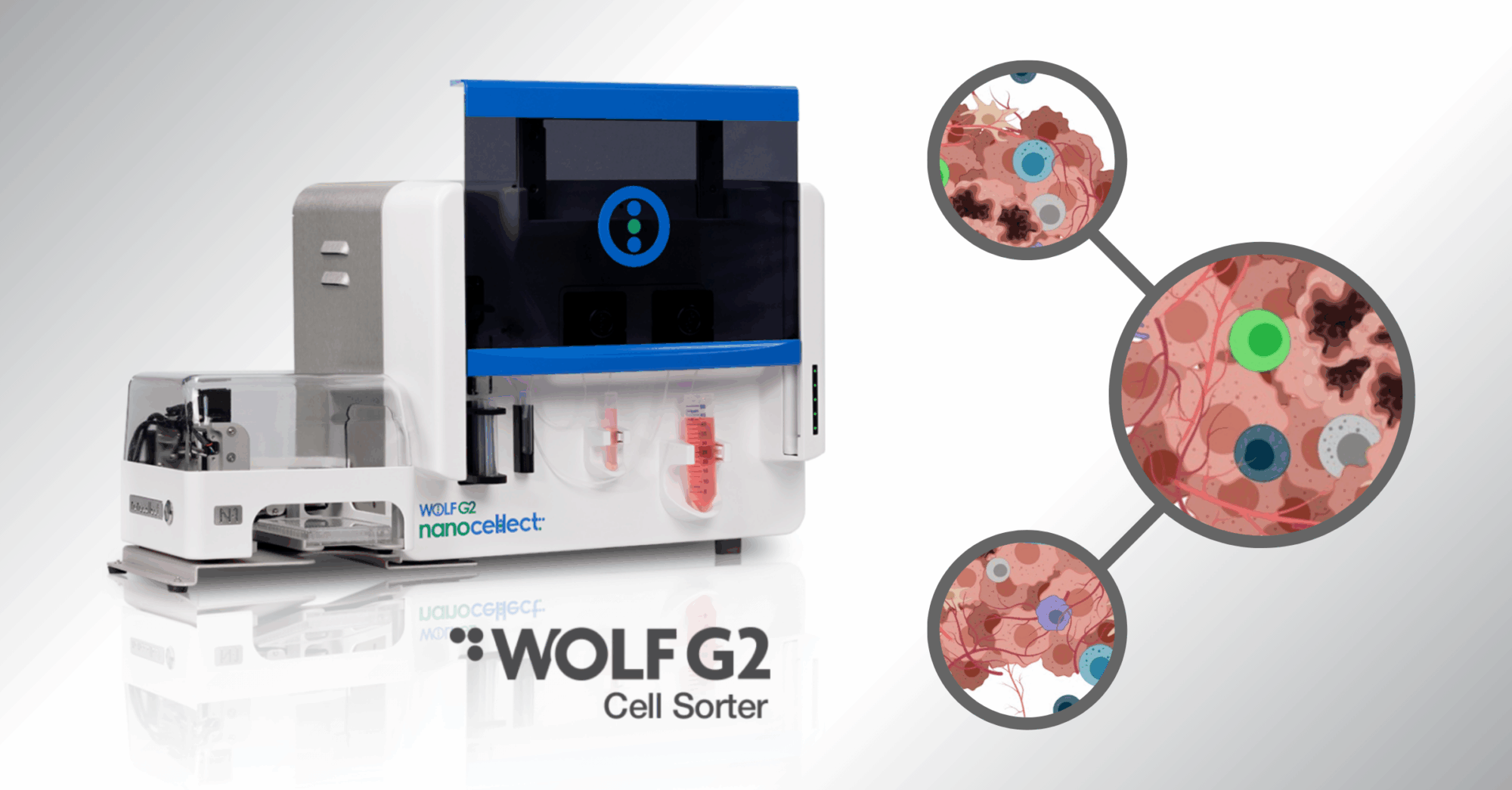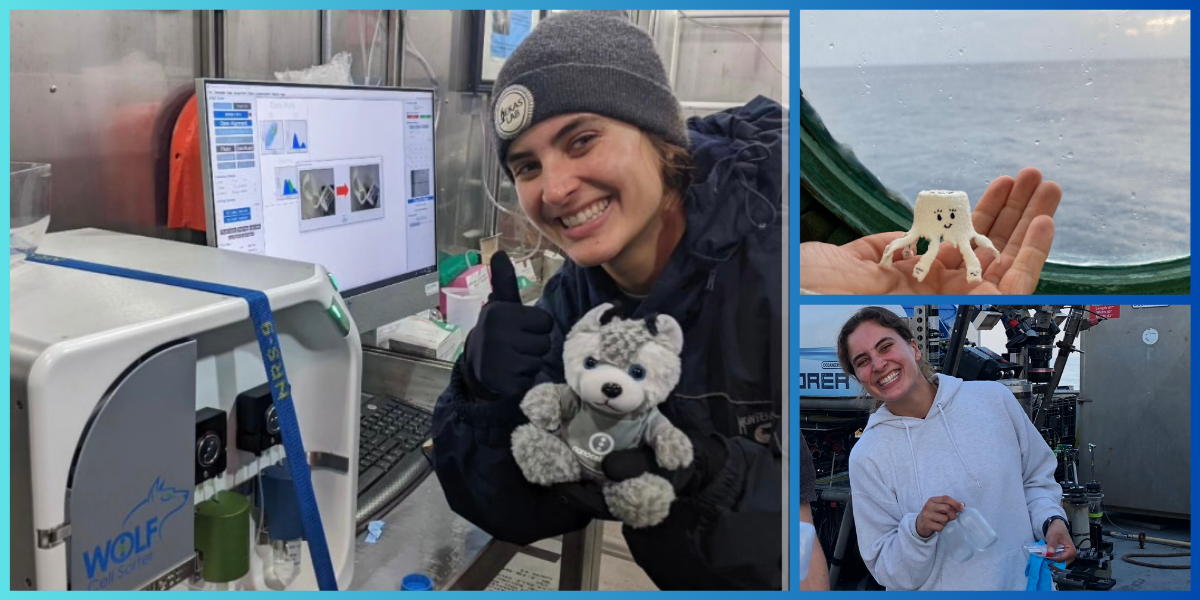Using Single-Cell Deposition Technology to Generate a Clone

If you’re landing on this page having read The House of The Scorpion in your childhood, worry not. “Generating a clone” here refers to cell populations that share a common ancestry—meaning they were derived from the same parent cell.
We thought it would be good to clear the air for you sci-fi buffs.
So, where do the clones fit in?
Single-Cell Cloning | A Short and Sweet 101
Single-cell cloning is the act of weeding out a single-cell from a heterogeneous population and then allowing it to repopulate to create a homogenous population of cells. These specific cells are then genetically identical, which allows for precise protein studies, drug production, and more. It is often used after you’ve mutated (transfected) the cells in your cell population to edit a particular gene. There are multiple cloning methods that are feasible to do this.
- Micromanipulation – A microscope-assisted method to pick up and place a single cell at a time. This hyper-responsive, hyper-accurate technology uses computer vision and motion control activation to control a micropipette. With this hyper-accuracy at their disposal, researchers can pick up a desired cell and place it in a variety of microenvironments, allowing full customizability in terms of studying it.
While it may seem like the process is going to be as simple as using this micropipette to grab the cell you want and isolate it, things tend not to work out that neatly. In fact, it’s difficult to even know you’re grabbing the appropriate cell. Even without that challenge, this method would be incredibly taxing and time-consuming.
- Serial/limiting dilution method – This method is faster than micromanipulation but is even less specific for choosing the desired cell. With serial dilution, you’re diluting your cell population to a series of different low concentrations. Once complete, the wells are then kept in a stable environment to allow cell growth. After a few days, the wells reveal whether there were zero cells (no growth) or multiple cells (too much growth). Once the wells have been filled to about a third full with growing cells, the homogeneity can be confirmed.
- Cloning rings – More manual than micromanipulation, this involves a small polystyrene ring which is placed around a small cell population of about 20 or fewer cells. With the cells spread out on a plate, there are going to be singular cells starting to grow into a colony. The ring is used to physically isolate these clonal populations. The medium is removed from the well and trypsin is added to detach the cells and then transfer them to their own dish to grow and expand. Similar to the serial dilution method, you’ll need to take a few days to confirm that the clonal population is indeed a homogenous population.
- Cell printers/automation – Faster methods are available, such as a single-cell cloning system called VIPSTM (or Verified In-situ Plate Seeding). As described in an article by Patricia Fitzpatrick Ph.D., Single-Cell Cloning Remains a Challenge, VIPS is a multi-step process that allows for 96-well plates to have high clonal efficiency:
“The VIPS system can generate a resultant output 96-well plate with high seeding efficiency rapidly; and due to the low-pressure, gentle nature of the dispensing method, the majority of these wells will go on to form colonies resulting in high cloning efficiencies.”
The low-pressure aspect of this technique is incredibly important when dealing with single cells. High pressures can cause necrosis from the shearing effect on the cell wall. It’s not a risk you want to take with single-cell cloning—where every dead cell is another day or even week of work lost.
Patricia Fitzpatrick goes on to discuss that VIPS is generally purchased by customers for suspension CHO cells. CHO cells (Chinese hamster ovary cells) are one of the primary cells used in cell line development and recombinant protein production for their robustness, flexibility, and their ability to produce human-compatible proteins. However, she points out that due to the gentle nature of the method, it should be well suited to a variety of other cell types which are normally damaged by FACS.
An Interjection | FACS and Recent Developments in Flow Cytometry
Since the point of this article is to show off methods to generate a single-cell clone, there is one correction that needs to be made from above:
Fluorescently activated cell sorting (FACS) is a method by which certain biomarkers on cells are tagged by fluorescent markers. From there, the population is run through a flow cytometer which uses laser technology and optics to analyze the scattered and fluorescent light from the cells and markers. This tells the electronic systems what type of cell it is and how to sort the cell.
Unfortunately, this incredibly efficient system can result in large quantities of cell death from standard instruments which use high pressure, making it (as mentioned above) not suited for single-cell cloning for many cell types.
At least, that used to be the case.
NanoCellect has been the frontrunner for changing the industry perspective on flow cytometers in cell sorting. With less than 2 psi internal pressure, the NanoCellect Wolf Cell Sorter creates an efficient, gentle sorting machine that is 30 times gentler than the next leading flow cytometer.
Now, back to clone generation!
The Challenges of Single-Cell Cloning
Single-cell cloning, while straightforward in theory, is actually quite unique in its challenges. For a list of the most apparent challenges with generating clone cells:
- Stringent regulations make the confirmation process time-consuming. In the US, the biggest regulatory body for cell cloning is the FDA. The reason is that they monitor all recombinant proteins from CHO cells (as these will often end up being used in therapeutic drugs). The actionable point here is that, if they are used for therapeutic drugs, then they must be derived from a single cell.
- Manual methods, like micromanipulation, are inefficient in mass production. Due to the heavily regulated industry, single-cell cloning has been pushed into the spotlight as the critical problem to solve in order to unlock researcher innovation. In the article, An Efficient Protocol for Single-Cell Cloning Human Pluripotent Stem Cells, Amar Singh, Department of Biochemistry and Molecular Biology at the University of Georgia, writes:
“One of the major bottlenecks in gene editing is at the stage of single-cell cloning, which is thought to be variable across hPSC lines and is substantially reduced following a transfection. Due to the difficulty of performing fluorescent-assisted cell sorting (FACS) for single-cell microfluidic isolation of hPSCs, previous approaches rely on manual colony picking, which is both time-consuming and labor-intensive.”
- Ghost cells that go unnoticed in monoclonal populations can ruin experiments. Ghost cells are considered the cells outside the normal scope of well imaging (they are often attached to the well walls). These can be missed by imaging equipment because of the low-resolution optics. If left unseen, these will eventually migrate to your once-homogenous cell population to ruin your sample.
Though the difficulties of generating single-cell clones are apparent, there’s no mistaking the benefits. Homogenous populations allow for far more impactful research—whether it be in pharmaceutical industries or cell biology theory.
New Frontiers in Single-Cell Deposition and Clone Generation
Heterogeneous cell populations make it nearly impossible to study morphological or cell characteristic differences when gene editing. And with the rise of editing tools like CRISPR technology, TALEN, and ZFN, isolating single-cell clonal populations is becoming more and more crucial.
As this technology continues to improve, there are further steps you can take in the interim to increase your lab’s efficiencies.
Start by ensuring your sorted cell populations are still healthy and happy.
With NanoCellect’s WOLF G2 Cell Sorter, you can automate the cell sorting and cell assay process through their improved flow cytometry technology. With pressures 30 times gentler than standard machines, NanoCellect understands the importance of cell viability in clonal generation.
Sources:
- Frontiers. An Efficient Protocol for Single-Cell Cloning Human Pluripotent Stem Cells. https://www.frontiersin.org/articles/10.3389/fcell.2019.00011/full
- Bitesizebio. The art of generating single-cell clones. https://bitesizebio.com/42870/to-be-a-clone-or-multiclonal/



